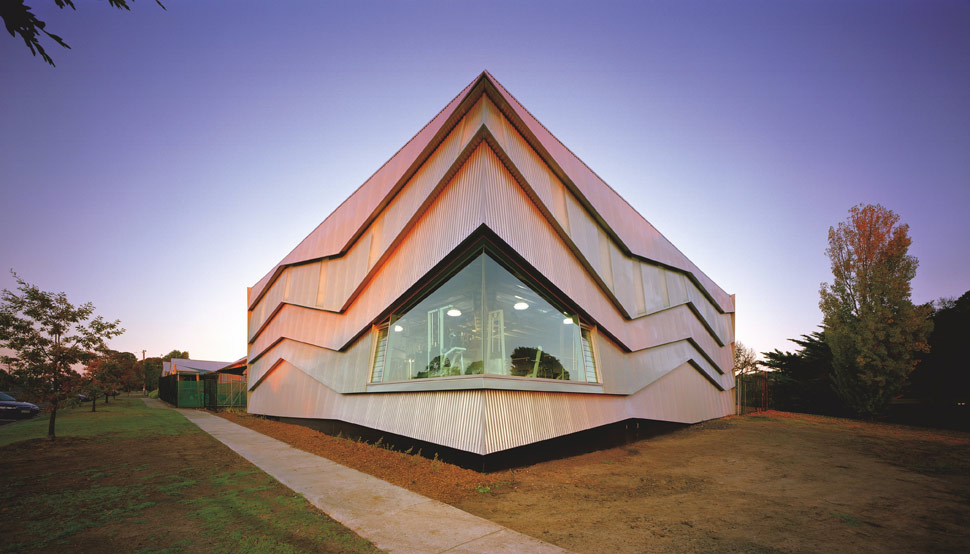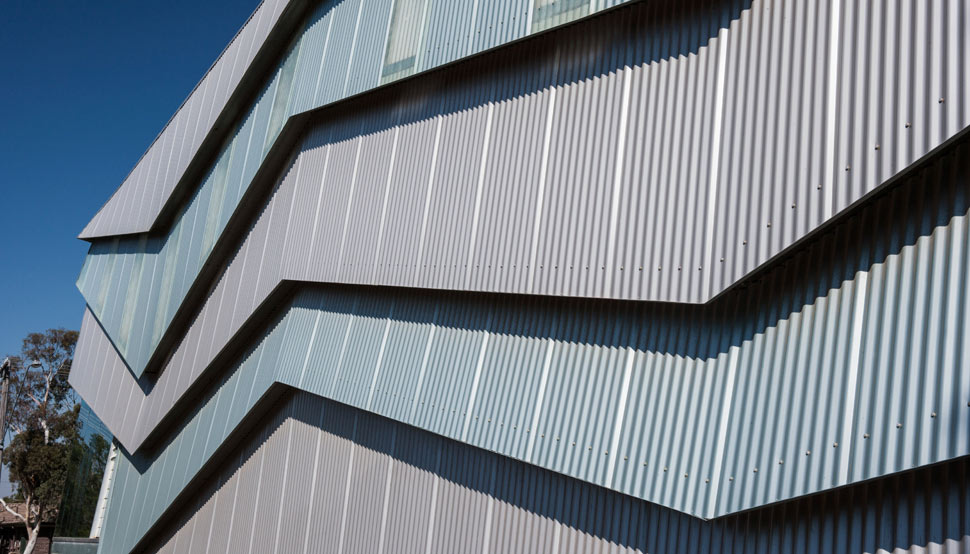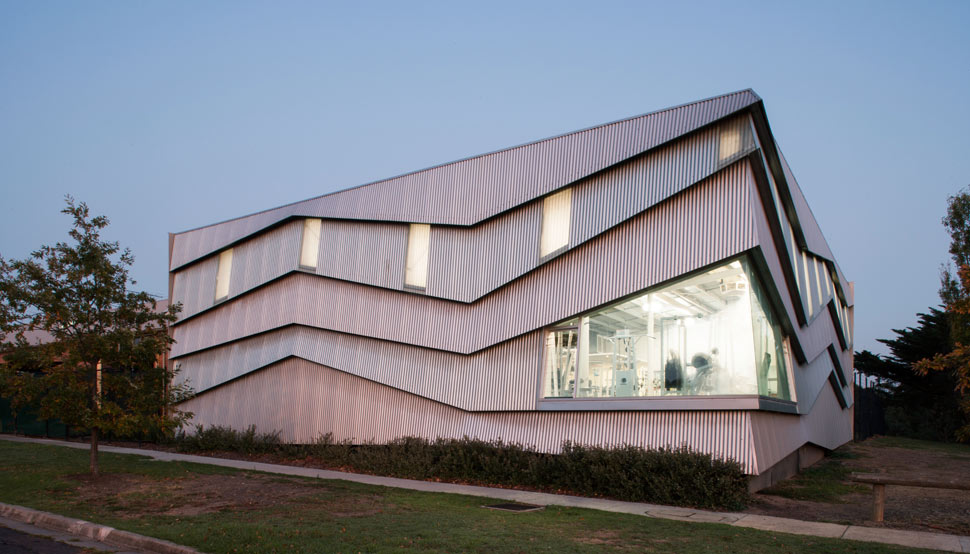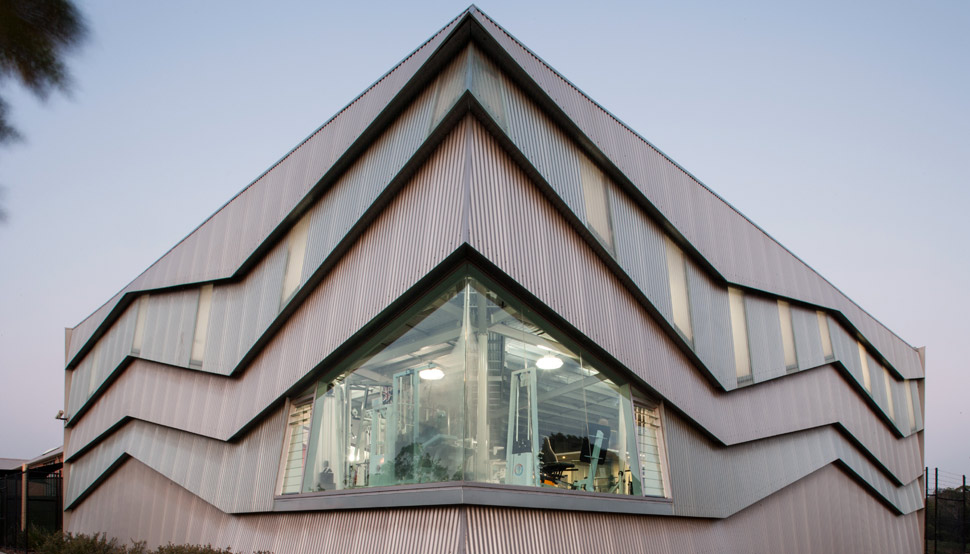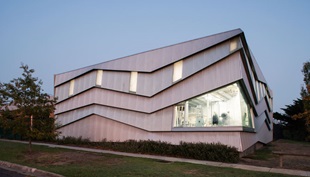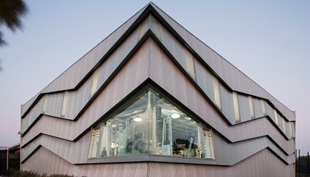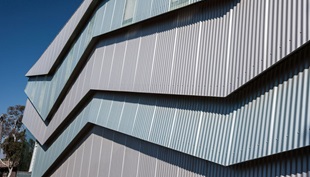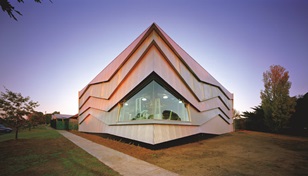Sunbury Aquatic Centre
A textural application of cladding staggered along horizontal wall girts has seen Suters Architects transform a suburban gym into a flamboyant design statement.
Credentials:
Client: Hume City CouncilArchitect: Suters Architects
Project Team: Stephen Cheney, John Schout, Stasinos Mantzis, Peter Byrne, Steven Laughlin, Stuart Waters
Structural & Civil Engineer: Brown and Tomkinson
Builder Contract: Control Services
Steel Fabricator: DVP Engineering
Landscape Architects: Land Design Partnership
Building Size: 490m2
Project Cost: $1.4 million
Words: Rob Gillam
Photography: Paul Bradshaw; Emma Cross
Constrained by a tight budget and charged with maximising internal space, Suters Architects would have been left with little room to make a meaningful architectural contribution to the Sunbury Aquatic Centre without some lateral thinking.
When commissioned to add a gymnasium to the Sunbury Aquatic Centre complex, Suters was tasked with reconciling its clients’ commercial requirements against a responsibility to also provide the building with aesthetics that would, in the words of principal Stephen Cheney, “make a grand gesture for the community that would generate some pride and also articulate the building’s function.”
“The client's brief was to create the most area with the least amount of expenditure,” says Cheney. “It was about maximising the usable floor space – basically, the brief was for a box.
“The building is right up on the site’s northern edge, so we went right to the end with a basic rectangular shape. The most economical way we could build such an enclosure was to use a portal frame but we didn’t want to just leave the end of the building as a plain linear structure. It needed an iconic element that would make people take notice, so we started fiddling with the end.”
Having exhausted horizontal internal area, the architects harnessed vertical space. “Operators don’t like all sorts of difficult, obtuse angles. They want to easily lay out and designate areas. So we had to take it from a basic rectangle to something that had presence.”
A cathedral-like frontage injected with an enormous triangular window and intriguing layered cladding now provides Sunbury Gym with ample street character.
By incorporating a zig-zagging heart-rate monitor motif into the exterior design, the architects energised the facade. “The layered stripes provide smaller elements and help break down the scale of what could otherwise have been an imposing, sheer wall.”
Such tactics are not new for the practice. “We’ve used that idea of breaking down mass on a number of facilities, including Caroline Springs Sports Stadium and more recently the Richmond Football Club, which has similar notions. These projects are continuations of the design tactic.”
So how did the architects achieve such an apparently intricate cladding effect? Quite simply, according to Cheney: “We staggered cladding along horizontal wall girts to form a pattern. Normally, you’d have the cladding fixed to just the outside without variation in depth.
Our notion was to put the top end of some of these panels on the inside of the girt rather than the outside, and that way create some depth in the facade so that in simple terms you’re keeping the same structure but you get that layering effect.”
The cladding is LYSAGHT CUSTOM ORB® profile made from COLORBOND® steel in the colours Axis® and Conservatory®, which alternate vertically on the northern face.
These colours slowly change throughout the day, along with shadows created by shifts in cladding depth.
“We chose metallic colours because we wanted them to be basic, but strong,” Cheney says. “To some degree, we wanted this project to be controversial and the colours support that, while also providing a metamorphasising texture. We also like the rawness. We keep things raw where we can. If it’s metal there’s no great need to over-dress it.”

